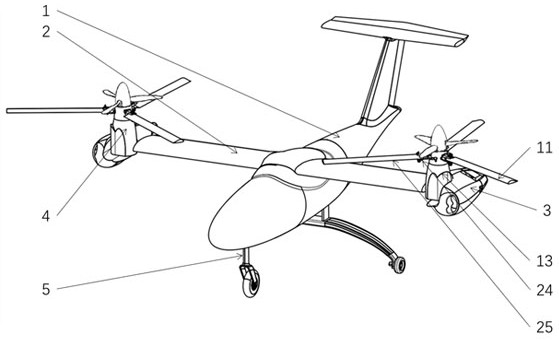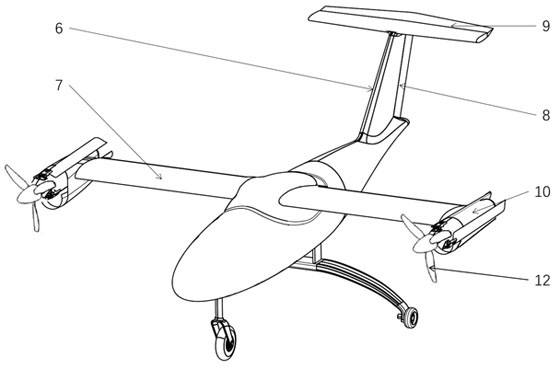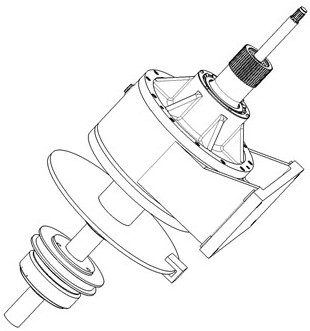Working method of propeller-rotor composite configuration tilt rotorcraft
A technology for a tiltrotor and a working method, applied in the field of aircraft, can solve the problems of inability to further increase the flight speed, low hovering efficiency, and large resistance, and achieve the effects of reducing weight, increasing vertical performance, and reducing forward flight resistance.
- Summary
- Abstract
- Description
- Claims
- Application Information
AI Technical Summary
Problems solved by technology
Method used
Image
Examples
Embodiment Construction
[0031] A specific embodiment of the present invention will be further described below in conjunction with the accompanying drawings.
[0032] like Figure 1-2 As shown, the wing 2 is installed on the upper side of the fuselage 1, the T-shaped tail 6 is installed on the rear side of the fuselage 1, the nacelle 3 is installed at the tip of the wing 2, the number is 2, and the composite power unit 4 is installed in the nacelle 3. Internally, the front three-point wheeled landing gear 5 is used, which is installed on the lower part of the fuselage 1, the aileron 7 is installed on the rear edge of the wings 2 on both sides, the rudder 8 is installed on the rear side of the empennage 6, and the elevator 9 is installed on the empennage 6. On the side, the compound power unit 4 is powered by the engine 10, the engine 10 is installed inside the nacelle 3, and is connected with the transmission device 13, and the rotor 11 (including the rotor hub 24 and the rotor blade 25) and the prope...
PUM
 Login to View More
Login to View More Abstract
Description
Claims
Application Information
 Login to View More
Login to View More - R&D
- Intellectual Property
- Life Sciences
- Materials
- Tech Scout
- Unparalleled Data Quality
- Higher Quality Content
- 60% Fewer Hallucinations
Browse by: Latest US Patents, China's latest patents, Technical Efficacy Thesaurus, Application Domain, Technology Topic, Popular Technical Reports.
© 2025 PatSnap. All rights reserved.Legal|Privacy policy|Modern Slavery Act Transparency Statement|Sitemap|About US| Contact US: help@patsnap.com



